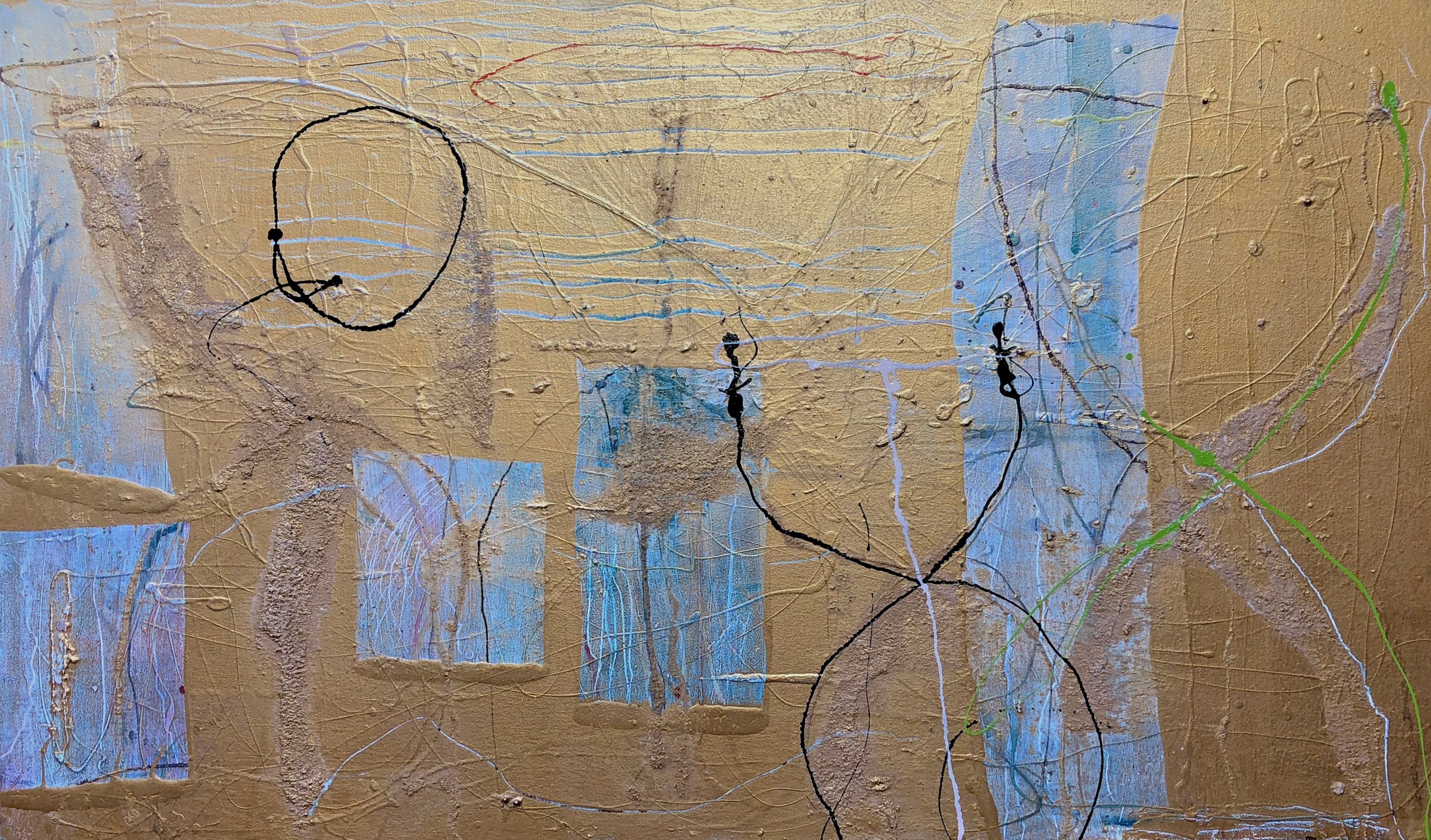Timeshapers At Sara Nightingale

Sara Nightingale Gallery in Sag Harbor presents “Timeshapers,” an exhibit featuring the works of three friends: Paul O’Connor, Mimi Saltzman, and Johnny Wong. Opening Saturday, December 1, from 5 to 7 PM, and running through December 28, Timeshapers explores O’Connor’s “meditation holes,” Saltzman’s hourglass figures, and Wong’s diamond shapes.
Paul, how did the three of you meet?
Paul O’Connor: I met Mimi Saltzman’s brother, Robert, in Taos, New Mexico in 1989 when my wife and I moved there. I knew who she was and we knew people in common, but didn’t actually connect personally until 2012. I was publishing a book of my black and white portraits and the image I used for the cover was one of her old boyfriends, Bill Gersh, so Mimi wrote the story that accompanied his photo in the book. It was through that project that we clicked as like-minded enthusiasts for art and life.
Mimi introduced me to Johnny Wong on my first visit to New York City. There was an instant synergy of style and manner of approaching the moment. I hosted a show of Mimi’s work at the Philip Bareiss Gallery in August 2017, and it was truly a collaborative effort between Mimi, Johnny, and myself. It was a fantastic show that was well attended by the Taos art scene. I think that show and creative process of putting it together was one of the seeds of this current exhibit.
How does your approach to woodworking and painting differ?
PO: My relationship with materials has its origins in the building trade. I started working for a contractor in Malibu, California, in 1982, when I got out of the Navy. It was always something more than just a way to make money. I had an affinity for making things beautiful, precise, aesthetic, and lasting. I got that from Don Bird, who took me under his wing and taught me how to use power tools, paint and stain, mix and match, essentially how to see things from the ground up. Bird always got these jobs working for people where time and money didn’t seem to matter and we could do things without looking at the clock. I still work that way.
Often people ask me how long it takes me to make a piece, and the fact is I have no idea. I’m usually working on about four pieces at a time, and when I get stuck on one, I’ll move to another for a while until I’m ready to do the next step. There’s one piece still in my studio after almost a year that I just can’t seem to finish.
Describe your “meditation holes.”
PO: I refer to them as “voids,” although that word can have a negative connotation to it (as well as hole). That black hole symbolizes “vast spaciousness, so vast that even light gets lost in it,” and indeed that is what is happening. Light is going in, but not coming back out. There is also a “purity” of black because it is not influenced by materials.
In the absence of form, one finds limitless space. It’s also as simple as the play of form and formlessness, to the degree that these wall hanging constructions may be meditative in nature, then I would attribute that to my daily practice of focusing on the infinite space that holds all things.
Mimi, what’s your connection to the East End?
Mimi Saltzman: I grew-up part time in Montauk as of 1957 and have a lifelong, deep connection to the East End. I moved to Sag Harbor four years ago and have an awesome studio here.
How do you incorporate your studies in psychology into your artwork?
MS: My fascination with psychology vis-á-vis painting (both mine and other artists) is analysis of the impact a work has and the content it carries. For me, making art in the studio happens with the materials and often finds its meaning later. Good art should grab the viewer fast with color and design, while the message may dawn slowly.
My own messages frequently don’t even occur to me until I finish painting the works. I had no idea what the first hourglass series meant until I had my second child. Then, I knew it was about the biological clock. Now, it’s about mortality.
What is it about the hourglass that fascinates you?
MS: The hourglass fascinates me for a few reasons. I lived in Taos for years and an artist I loved gave me an antique hourglass. He also taught me a lot about art and life. The shape is decidedly feminine and elegant. The sand that moves “her” is dynamic and full of urgency but cannot be rushed. The glass surrounding it has clarity and fragility. The object is ancient and very precise. It has nothing to do with technology. Neither do my paintings.
Johnny, what does a single line symbolize to you?
Johnny Wong: Each single line responds to our path traveling in this universe. How we cross paths with one another and create an electricity of social interaction. My work is about time and using the strongest element of design, the line. Without line, there’s no shape. Without shape, there’s no form. Without shape and form, there’s no texture. And without line or shape, there’s no pattern.
For the last 10 years, my series of works in media such as mirrors, wood, and canvas has incorporated the line element with my interpretation of time.
What are some parallels between yours and Saltzman’s work?
JW: I see Saltzman’s work as highly emotional and very profound. Her art on canvas in materials of salt, tears, and personal clothing are her reflection of the time she lived and still accelerating on. It’s the tiny details of a living female artist today magnified into a canvas baring it all.
How does your study of motion graphics play a role in your artwork?
JW: My study of motion graphics in television and film initiated my attraction to the interplay among history, culture, and society. The motion led me to discover more on the idea of time, and graphic design supported the ideas I want to create in my artwork.
nicole@indyeastend.com



